1. The household power cord should be protected from overload, and the worn and aging power cord should be replaced in time to avoid accidents. If the household line is found to be in direct contact with trees and buildings to prevent the wires from being worn out, the trees should be cut in time or an insulating sleeve should be placed on the household line.
2. The household power supply insurance and the household insurance should be properly arranged so that it can play a protective role for household appliances. It is necessary to use a fuse that is compatible with the wire load. Do not arbitrarily fuse the fuse. It is strictly forbidden to replace the fuse with a copper wire or the like.
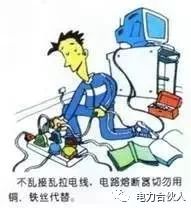
3. To connect the temporary power supply, use the qualified power cord, power plug and socket to be safe and reliable. If the damage is not used, the power cord connector should be wrapped with tape; the line connector should ensure good contact and reliable connection.
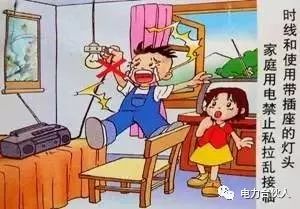
4. When the temporary power line is adjacent to the high-voltage transmission line, it should maintain a sufficient safety distance with the high-voltage transmission line.
(10KV and below 0.7m, 35KV1m, 110KVI.5m, 220KV3m, 500KV5m).
5. It is strictly forbidden to drill wells under high and low voltage wires, vertical TV antennas and fishing. Take care of the power facilities and don't fly kites near overhead lines and distribution transformers.

6. It is strictly forbidden to connect the wires from the public line without any trouble. If the wires are broken, no matter whether they are charged or not, they should be regarded as charged. Keep a sufficient safety distance from the wire break point and promptly report to the relevant departments. report.
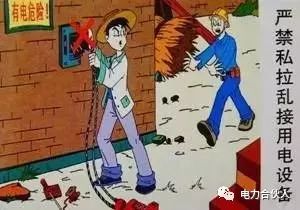
7. It is forbidden to smash the animals, reins and air on the pull wire of the pole to avoid electric shock. Keep the clothes hanger at a safe distance from the wires. Do not place the clothes on the wires.
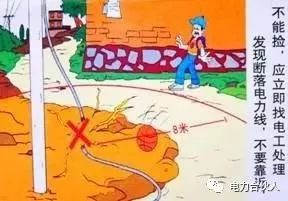
8. Room decoration, the power cord hidden in the wall should be placed in a special flame-retardant jacket, and the cross-section of the power cord should meet the load requirements. Do not overload the power. Special lines should be used for large-capacity electrical equipment such as air conditioners and ovens.
9. Wiring of household appliances must be correct. If in doubt, ask a professional. Household appliances should use elbows, and should have a good outer casing ground. A common ground wire should be installed indoors. Don't forget to install the grounding wire for the three-eye socket. Do not change the three-eye plug to the two-eye plug.
10. If the power switch housing and the wire insulation are damaged or the live part is exposed, you should immediately find an electrician to fix it, otherwise it will not be used.
11. Household electrical power should be equipped with a qualified leakage protector with overvoltage protection to ensure personal safety when using household appliances.
12. When the electrical equipment is found to emit smoke or smell, quickly cut off the power supply for inspection. In the event of a household appliance catching fire, the power should be cut off before fire fighting.
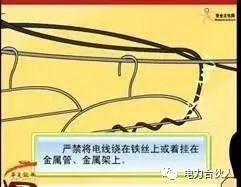
13. Wet hands cannot touch live household appliances, and do not wipe the household appliances in use with a damp cloth. Household electric showers must be disconnected from the power supply when taking a shower, and have reliable measures to prevent sudden charging.

14. Household electric heating equipment and heating equipment must be kept away from gas tanks. When the gas pipeline finds that the gas leaks, the window is first ventilated, and the thousand parties cannot pull the power supply, and the professional is required to repair it in time.
15. Use electric irons, electric irons and other electric heating devices, must be away from flammable materials, cut off the power after use, unplug the plug to prevent accidents. Clothing cannot be baked on electric heating equipment.
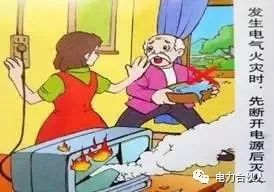
16. Do not approach or contact any live parts of electrical appliances, especially the high-voltage output of black and white, color TV sets, to avoid electric shock.
17. The power must be cut off when replacing fuses, household appliances or mobile electrical equipment. Do not risk live operation. If the household appliance is found to be damaged, it should be repaired by trained professionals. Do not disassemble it yourself to prevent electric shock.

18. The telephone line and power cord should not be used for the convenience of the same cable. Use different wires or cables separately and leave a certain distance when laying.
19. Household doorbells and electric faders are prohibited from using 220V power supply voltage. Safety voltages below 36V should be used.
20. Thunderstorms walk on the urban sidewalk. Do not touch the trees, poles and poles with your hands to prevent electric shock. In case of rain, thunder and lightning, turn off the TV, stereo, and unplug the power cord.

21. It is found that someone is electrically shocked, can not directly contact the electric shock, use a wooden stick or other insulation to pick up the power cord, so that the electric shocker is disconnected from the power supply. Move the electric shock absorber away from the power supply to the ventilated and dry place to supine, loosen the top and the belt. Give first aid, call 120 to call the ambulance in time, and send it to the hospital for rescue as soon as possible.
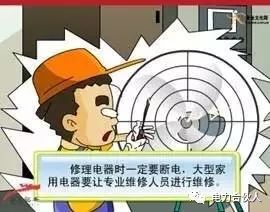
22. It is necessary to promote civilized and law-abiding electricity use, and to eliminate electric shocks in various forms of violations and illegal electricity theft.
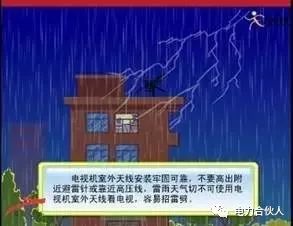

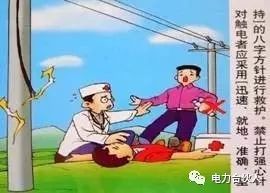
First, why should the lighting switch be connected to the fire line? If the lighting switch is installed on the zero line, although the light is not turned off when the light is off, the phase line of the light head is still turned on, and people think that the light is not bright, it is mistakenly considered to be in a power-off state. In fact, the ground voltage at each point on the luminaire is still a dangerous voltage of 220 volts. If people touch these actually charged parts when the light is off, it will cause an electric shock. Therefore, the switches of various lighting switches or single-phase small-capacity electrical equipment can only be secured if they are connected in series on the fire line.
Second, how to install a single-phase three-hole socket is correct? why? Generally, single-phase electrical equipment, especially mobile electrical equipment, should use a three-pin plug and a three-hole socket. There is a special protective zero (ground) jack on the three-hole socket. When using zero-connection protection, it is often only directly connected to the hole terminal in the socket bottom and the zero wire that is introduced into the socket. Extremely dangerous. Because if the neutral line of the power supply is disconnected, or the fire (phase) line and the neutral line of the power supply are reversed, the metal part such as the outer casing will also carry the same voltage as the power supply, which will result in electric shock. Therefore, the dedicated grounding jack for wiring should be connected to a dedicated protective grounding wire. When using zero-connection protection, the zero line should be specifically drawn from the power supply terminal, and should not be used near the neutral line of the socket.
3. Why is it not strictly immersed in the wall directly? (1) After long-term use of plastic insulated wires, the plastic will age and crack, and the insulation level will be greatly reduced. When the line is short-time overload or short-circuit, it is easier to accelerate the insulation damage. (2) Once the wall is wet, it will cause large-area leakage and endanger personal safety. (3) Plastic insulated wires are directly buried in the dark, which is not conducive to line maintenance and maintenance.
Why use a leakage protector? Leakage protector, also known as leakage protection switch, is a new type of electrical safety device. Its main purposes are: (1) to prevent electric shock caused by electrical equipment and electrical line leakage. (2) Prevent single-phase electric shock accidents during power usage. (3) Shut off the single-phase ground fault in the operation of electrical equipment in time to prevent electrical fire accidents caused by electric leakage. (4) With the improvement of people's living standards, the number of household appliances is increasing. In the process of using electricity, personal electric shocks and fire accidents caused by defects in electrical equipment itself, improper use and safety technical measures, give people's lives. And the property has brought undue losses, and the appearance of leakage protectors provides reliable and effective technical means for preventing the occurrence of various accidents, cutting off the power supply in time, protecting equipment and personal safety. (5) The total insurance must be installed before each household electric meter. The total knife switch and leakage protection switch should be installed after the meter. (6) In any case, it is strictly forbidden to use copper or iron wire instead of fuse. The size of the fuse must match the power capacity. When replacing the fuse, remove the porcelain cover and replace it. Do not directly connect the fuse in the porcelain box. Do not replace the fuse under the condition of charging (the knife is not opened). (7) After the fuse or the leakage switch is blown, the cause must be found before the switching power supply can be closed. Under no circumstances should the wire be used to short-circuit the fuse or press the leakage switch tripping mechanism for forced power transmission.
5. What are the main causes of electric shock accidents? Statistics show that the main causes of electric shock accidents are as follows: (1) Lack of electrical safety knowledge, flying kites near the high-voltage line, climbing the high-voltage poles and squatting the nest; after the low-voltage overhead line is broken, the hand is picked up without stopping the electricity. Fire line; black night electrified wiring hand touch the charged body; touch the damaged rubber cover knife by hand. (2) Violation of the operating procedures, connecting the line or electrical equipment without taking the necessary safety measures; touching the damaged equipment or wires; accidentally charging the live equipment; charging the lighting fixtures; charging the electric tools; charging the mobile electrical equipment; Wet hand twisting the bulb and so on. (3) The equipment is unqualified, the safety distance is not enough; the grounding resistance of the second-line and one-ground system is too large; the grounding wire is unqualified or the grounding wire is disconnected; the insulation-damaged wire is exposed to the outside. (4) The equipment is in disrepair, the wind blown line or the scraping pole is not repaired in time; the bakelite damage of the rubber cover knife gate is not changed in time; the motor wire is damaged, so that the outer casing is charged for a long time; the porcelain bottle is broken, so that the phase line and the pull wire are short-circuited. The device housing is live. (5) For other accidental reasons, walking at night touches the live conductor that has fallen off the ground.
6. What ambulance measures should be taken in the event of an electric shock? In the event of an electric shock, while ensuring the safety of the rescuer, you must first try to get the electric shocker out of the power supply quickly, and then carry out the following repair work. (1) Untie tight clothing that interferes with the breathing of an electric shock. (2) Check the mouth of the electric shocker and clean the mucus in the mouth. If there is a denture, remove it. (3) Immediately carry out the rescue on the spot, such as breathing stop, using mouth-to-mouth artificial respiration to rescue, if the heart stops beating or irregular vibration, artificial chest extrusion method can be used to rescue. It must not be interrupted without cause. If a second person is present in addition to the rescuer, the following work should be performed immediately: (4) Provide tools and equipment for first aid. (5) Dismiss the on-site staff. (6) Keep enough lighting on the site and keep the air flowing. (7) Report to the leader and ask the doctor to come to the rescue. Experimental studies and statistics show that if treatment is started 1 minute after the electric shock, 90% can be saved; if rescue is started 6 minutes after the electric shock, only 10% of the rescue opportunities will be available; and 12 minutes after the electric shock, the rescue will be started. The possibility of saving is extremely small. Therefore, when someone is found to have an electric shock, they should race against time and adopt all possible methods.
aluminium laptop stand amazon,vertical laptop stand india,vertical laptop stand multiple
Shenzhen ChengRong Technology Co.,Ltd. , https://www.laptopstandsuppliers.com